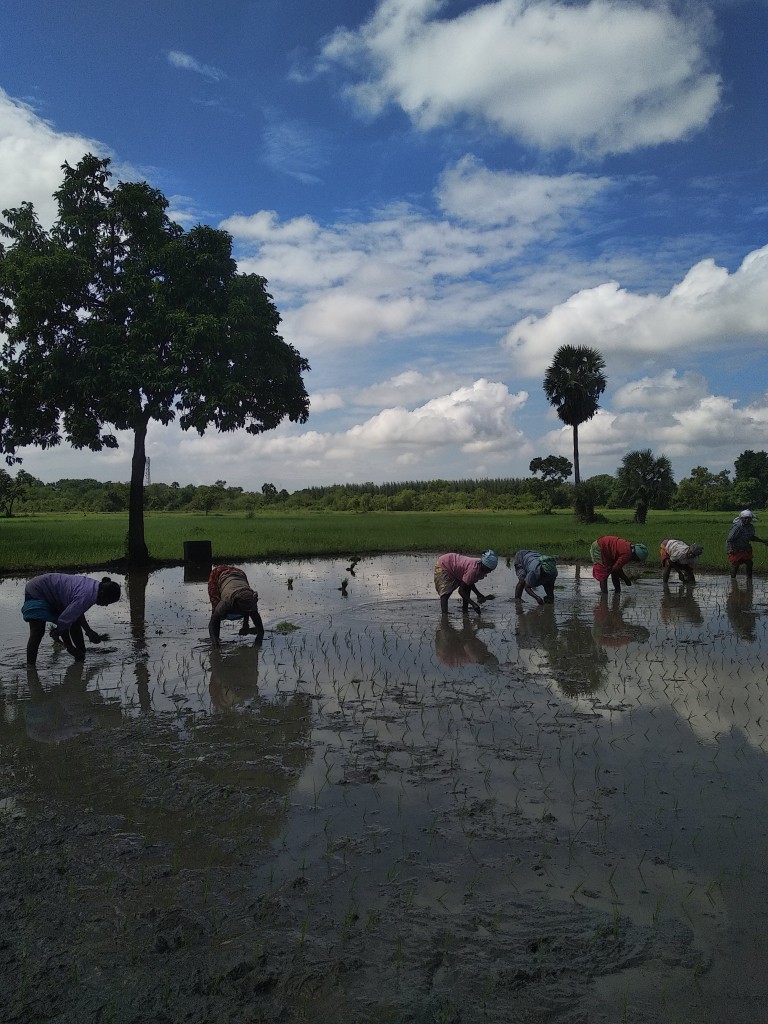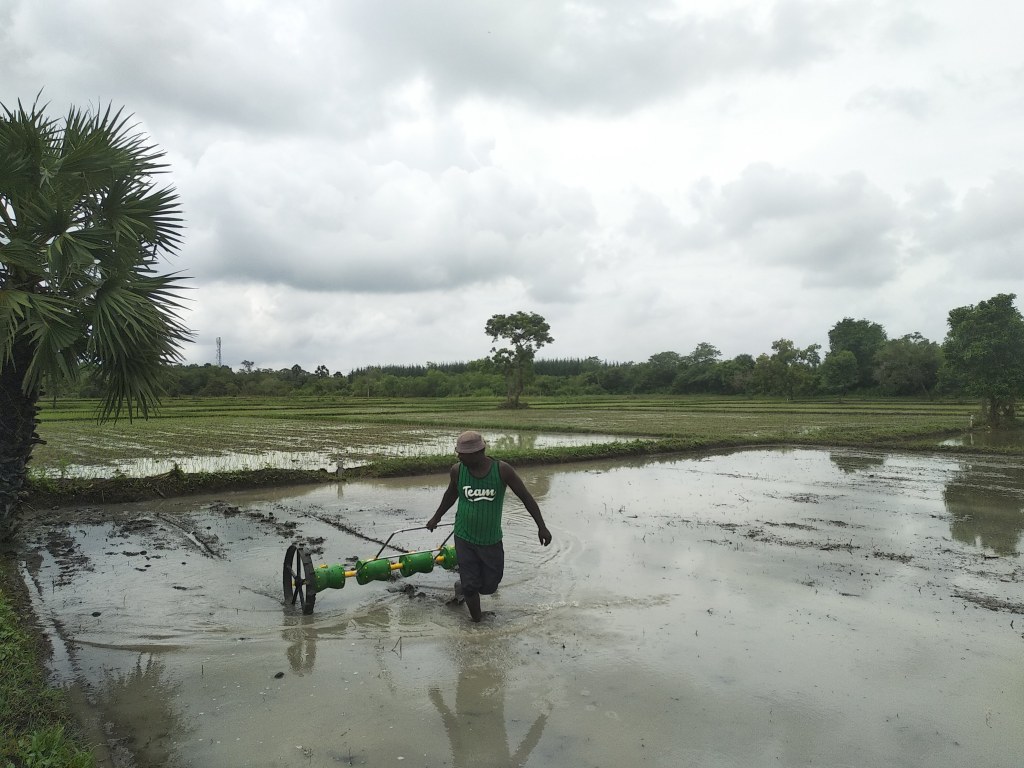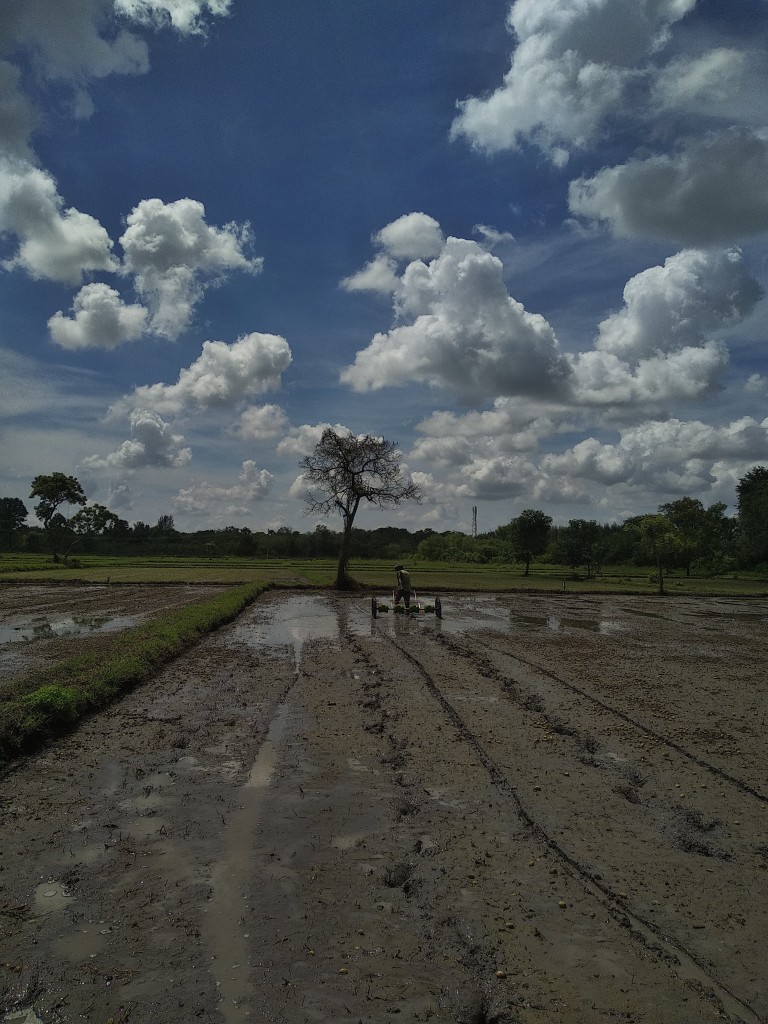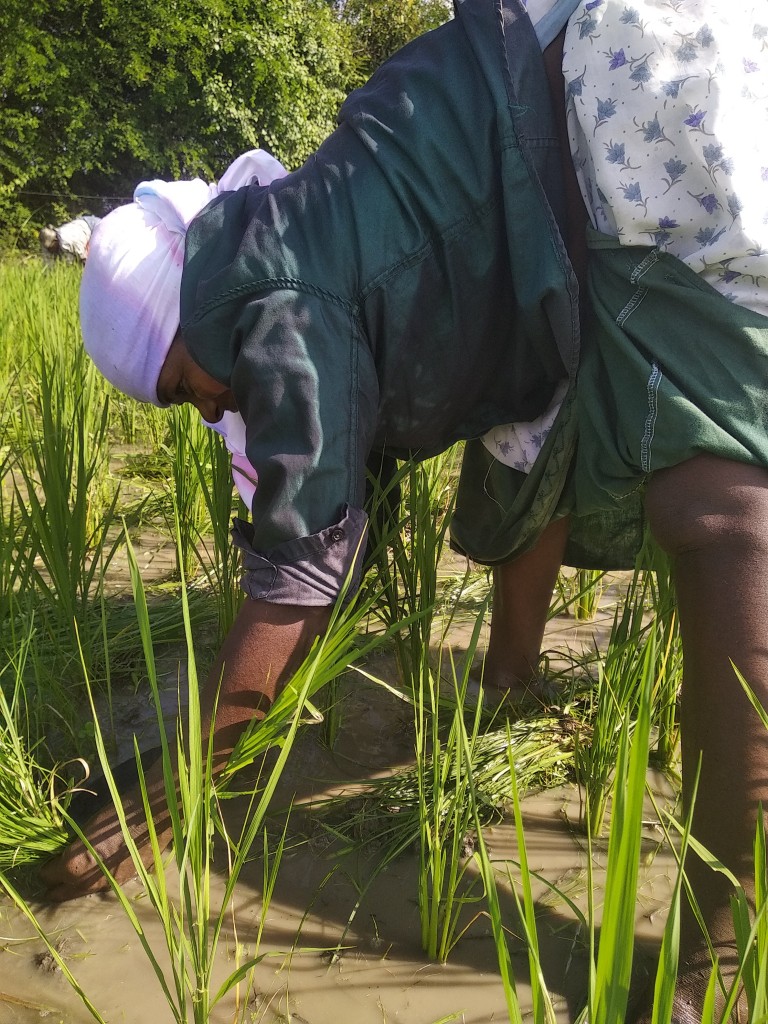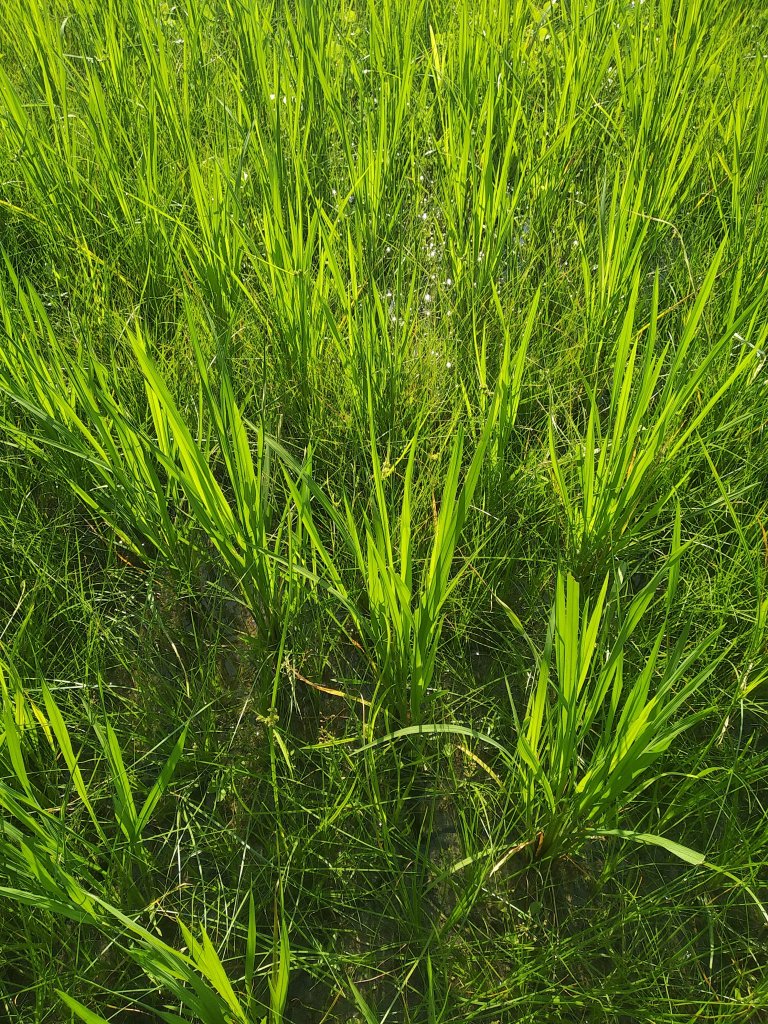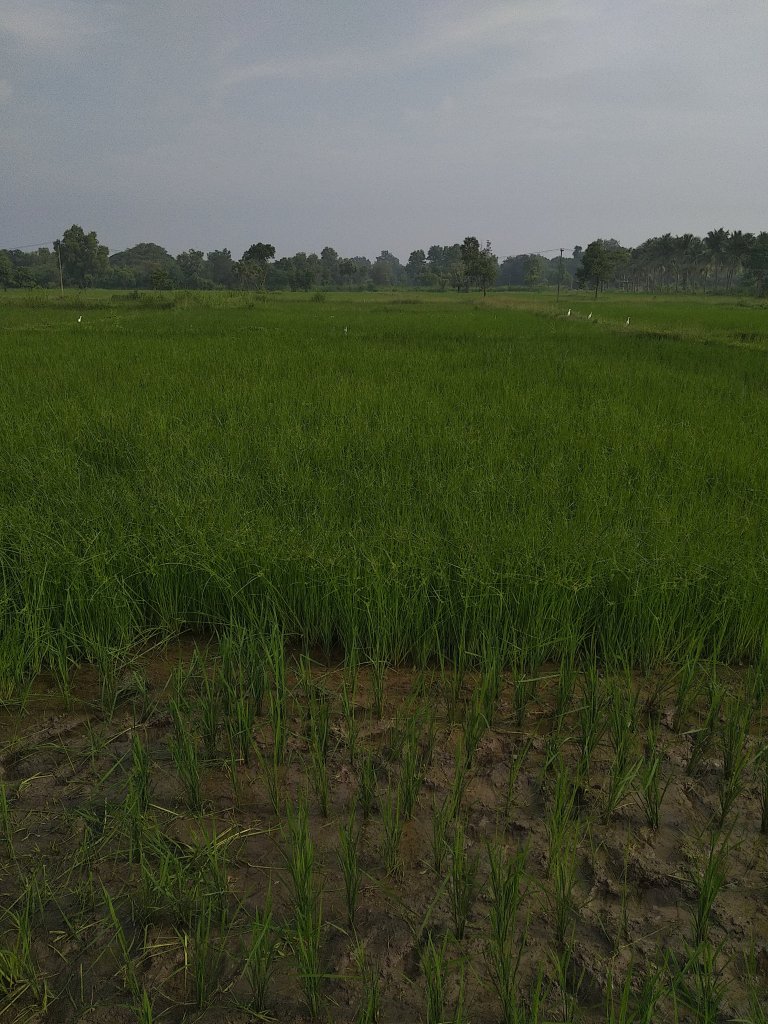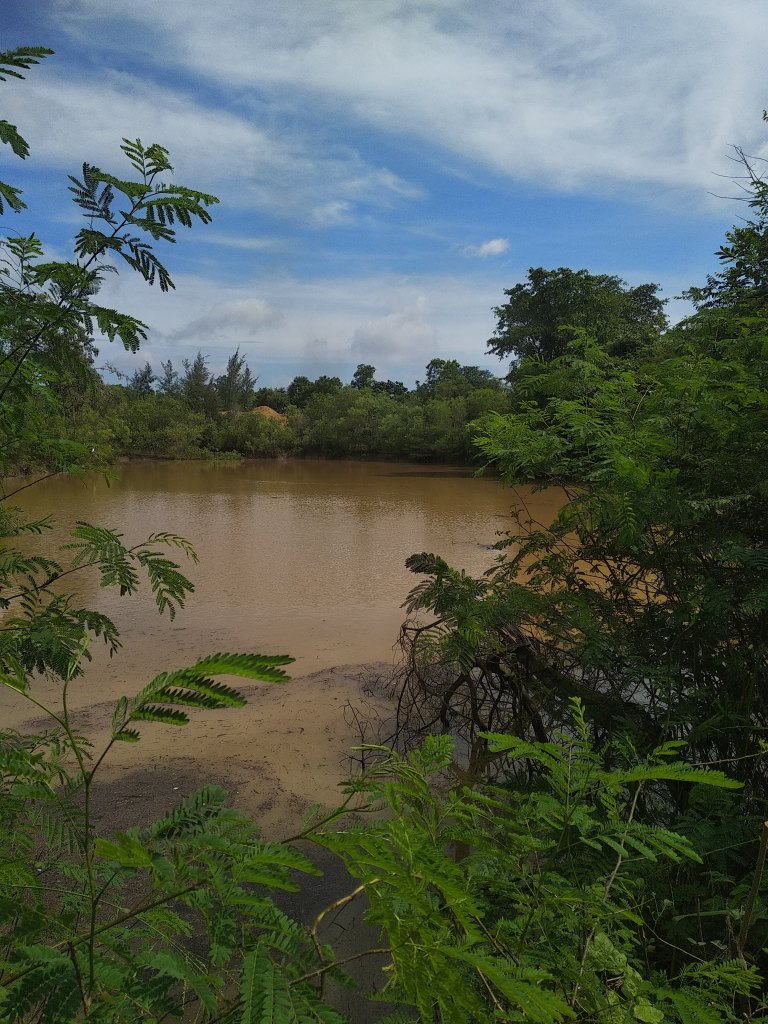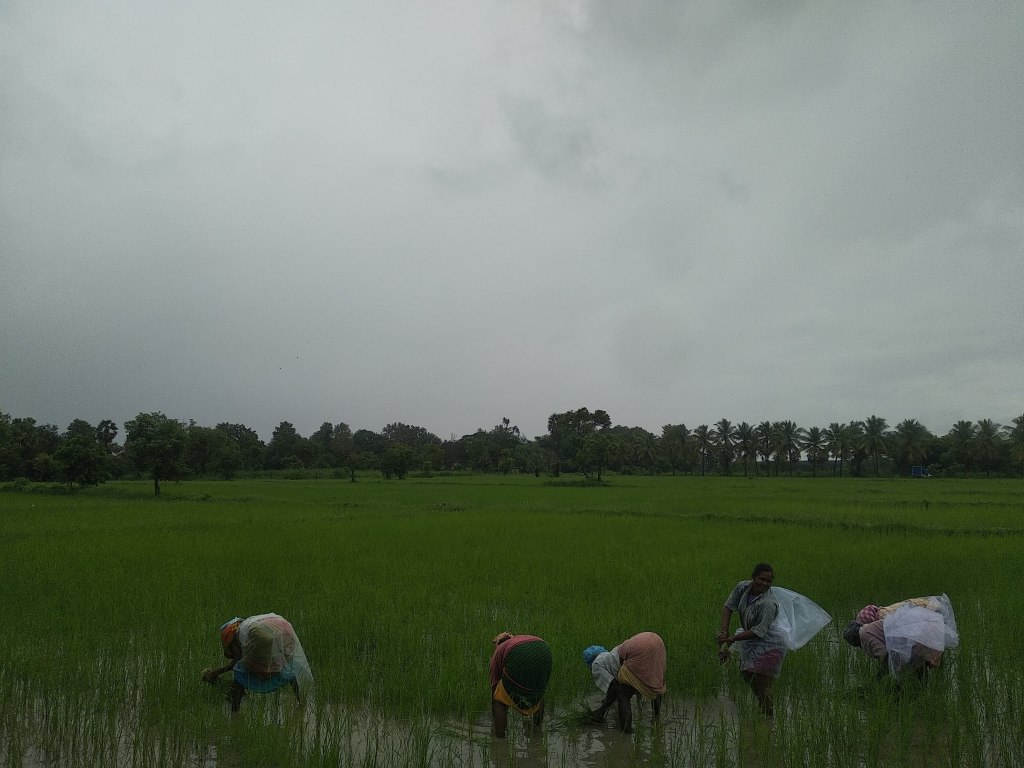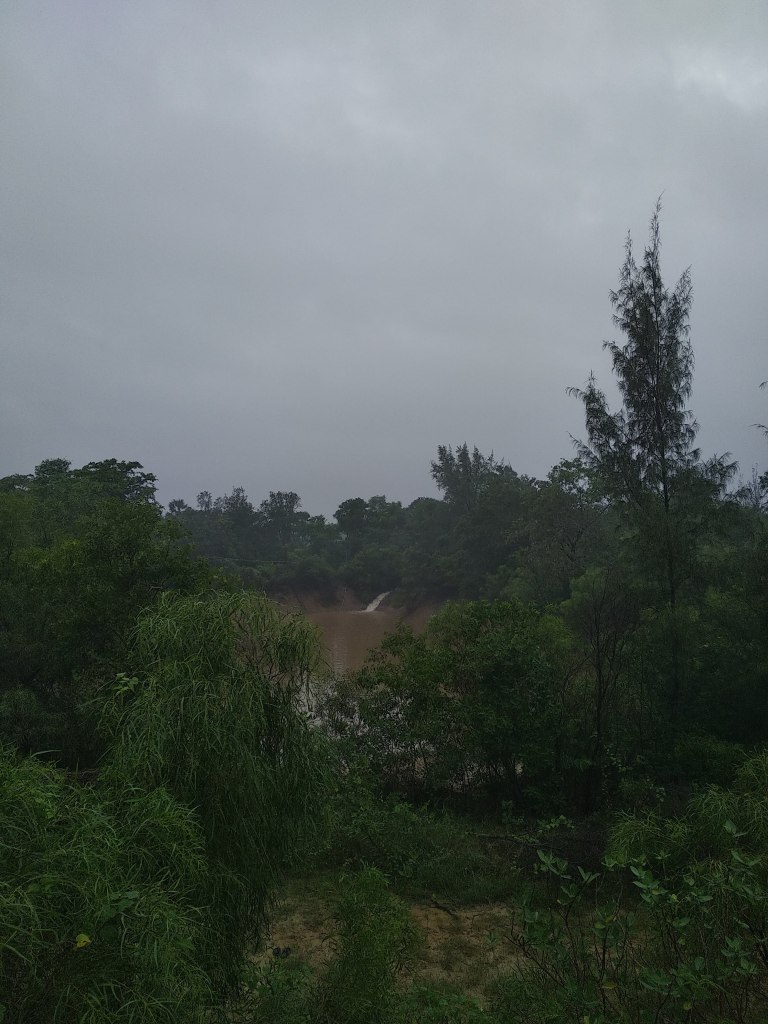Earlier this month we closed in transplanting paddy, a total of 20 acres with primary 3 varieties – Annapurna (farmer’s select), Poovan Samba (red) and CO43 (white; for parboiling) along with “Bhavani’ for seasonality test and a couple improved red varieties, long grain basmati for seed production.
After field preparation and transplanting; weeding the paddy is an extensive task and expense. We are testing various methods to reduce the weeding efforts; starting with a direct seed drill using a paddy drum seeder (hand-operated) to give a breather from continuous transplanting to start weeding early, dryland weeding techniques (couldn’t test extensively this season) and cutting overgrown weeds (grasses) through selected growing paddy fields.
In the best-case scenario, we receive a good amount of rainfall at the beginning or before the paddy season that fills 3 of our ponds enough to keep the fields wet that controls weed growth to some extent. Wet paddy fields are also easier to pull weeds out whereas dry hard fields slow down the process.
In season 2022-23 we observe very light rain (SW) at the beginning of the paddy, usually NE wind turn by the end of October but not this season. As ponds were running dry, we pause and yet continue through the season to finish the transplant by pulling in borewells and diesel pumps to irrigate the crop extensively. While struggling with the weather, we observed an uncontrollable amount of weeds coming through some paddy fields (extended dry conditions). CO43, one of our early short-erect straw variety and test direct sown Annapurna was the most affected; as we deal with these early planted fields, there is the next round of weeds building up in later planted paddy.
But the second week of November has brought us enough rainfall to fill one of the pond to its capacity. For now we can switch off borewells and fossil fuel for the paddy season.

